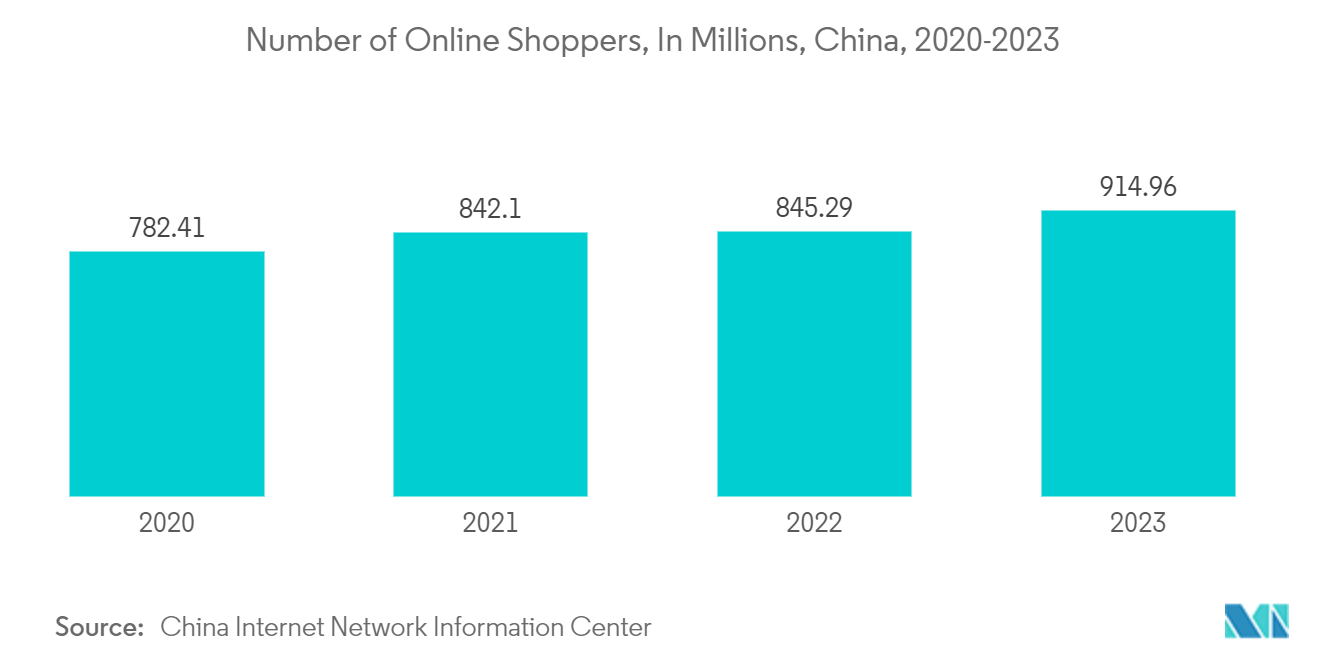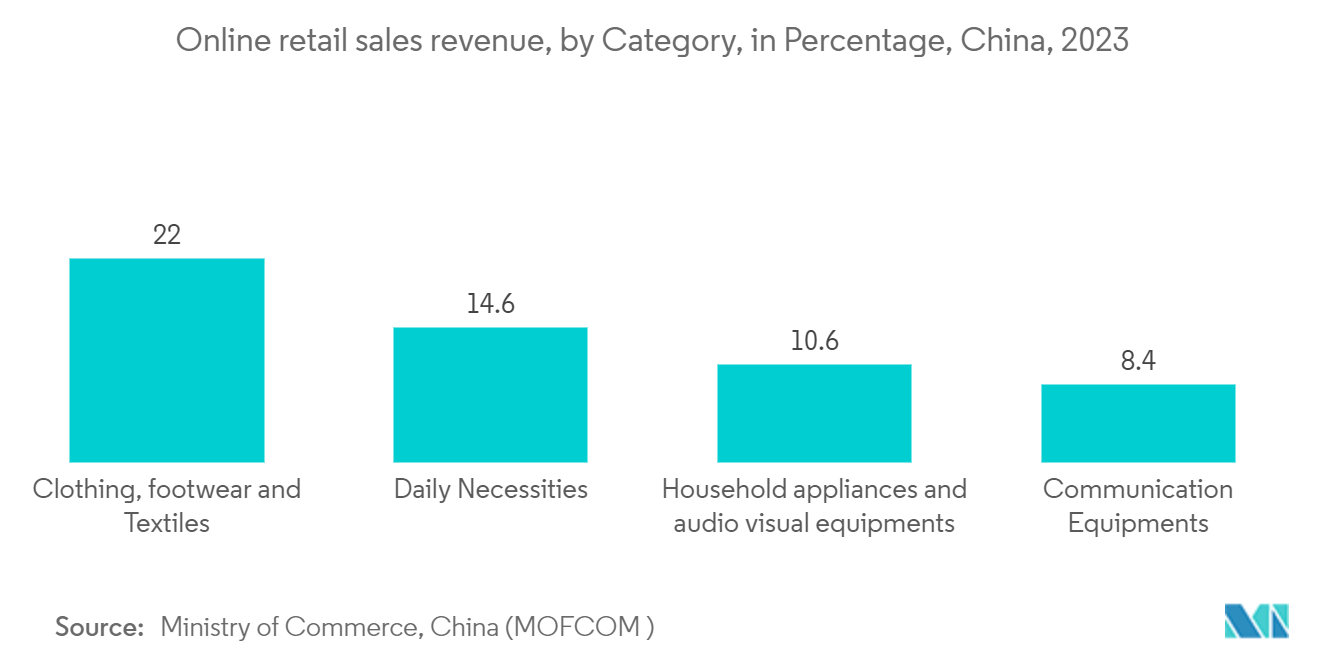Market Trends of China E-commerce Industry
B2B E-commerce is Expected to Witness Growth
- Chinese businesses are increasingly adopting digital solutions to streamline operations and improve efficiency, accelerating the demand for B2B e-commerce platforms. Additionally, the Chinese government is actively promoting digitalization and the growth of e-commerce through favorable policies and initiatives.
- China has risen as a global e-commerce leader, propelled by various factors. With a population surpassing 1.4 billion, the nation presents a vast consumer base keen on purchasing products and services online. Thus, B2B e-commerce platforms help businesses grow sales, optimize their supply chains, reduce costs, and improve transparency. Market players help sellers by supporting them in improving their advertising experience and providing business cash advances that can give sellers quick access to revenue-based loans.
- Major B2B platforms are expanding their ecosystems to offer services, including financing, logistics, and marketing, creating one-stop solutions for businesses. Moreover, there is a growing trend of Chinese B2B platforms facilitating cross-border transactions, helping businesses tap into international markets more easily. As per the data from the China Internet Network Information Center, the number of online shoppers in China rose to 914.96 million in 2023 from 845.29 million in 2022. Businesses require assistance from B2B platforms to increase sales volume.
- Small and medium-sized enterprises (SMEs) are shifting from conventional offline sales channels to online platforms for their sales and services. This blending of online and offline channels presents challenges across sectors but also opens up significant opportunities to cater to evolving customer preferences in online shopping. Thus, SMEs are increasingly leveraging B2B e-commerce platforms to expand their reach and compete on a larger scale.
- As B2B companies increasingly focus on B2C shopping experiences, the need for flexible, interoperable e-commerce architecture becomes paramount. The significance of Big Data in both B2B and B2C is surging. Multinational corporations (MNCs) leverage vast data pools to focus on their target customers, craft personalized experiences, deliver location-based services, and conduct competitor analyses across diverse markets.

Fashion and Apparel Hold the Largest Share
- Technology and digital innovation are reshaping China's fashion e-commerce landscape. With the market expanding, businesses are swiftly adopting new tech to align with evolving consumer tastes. This shift involves tech integration on online retail sites, leveraging digital transformations for superior customer experiences, and crafting a seamless commerce ecosystem. As per the Ministry of Commerce China, the clothing, footwear, and textiles categories contributed to 22% of online retail sales revenue in 2023.
- The rising popularity of online shopping has resulted in an increase in the number of online shoppers in the region, supported by high mobile internet penetration and the accessibility and speed of the Internet in China. Market players investing in AI, AR, and VR innovations are enhancing the online shopping experience, making it easier for consumers to visualize and try on clothes virtually.
- In June 2024, Shein, a leading Chinese fast-fashion brand, announced a strategic partnership with Ntx Group. The collaboration aims to revolutionize Shein's design and production workflows by integrating advanced artificial intelligence (AI) technologies. By harnessing Ntx's AI-driven methodologies, Shein aims to significantly reduce its time-to-market. Through this, Shein can introduce new fashion items to its e-commerce platform within just seven days and ensure product delivery within five days, which is faster than traditional design and production methods.
- Live streaming is a prevalent form of e-commerce in China, where key opinion leaders conduct live video broadcasts of themselves. At the same time, they market different goods and products to their audiences. The most significant advantage of live-streaming e-commerce is its ability to reach many people spread throughout the country, especially those outside of major cities. By targeting live streams in more rural areas and lower-tier cities, companies can increase brand awareness and expand their audience to all parts of China.
- Online shopping penetration increased in the region, supported by the rise of smartphone-driven m-commerce and innovative digital payment solutions offered by various market players in the area. For instance, as reported by the National Bureau of Statistics of China, China's consumer goods industry recorded total retail sales of around USD 6.64 trillion (CNY 47.1 trillion) in 2023, driving the growth of the e-commerce market in the country.


